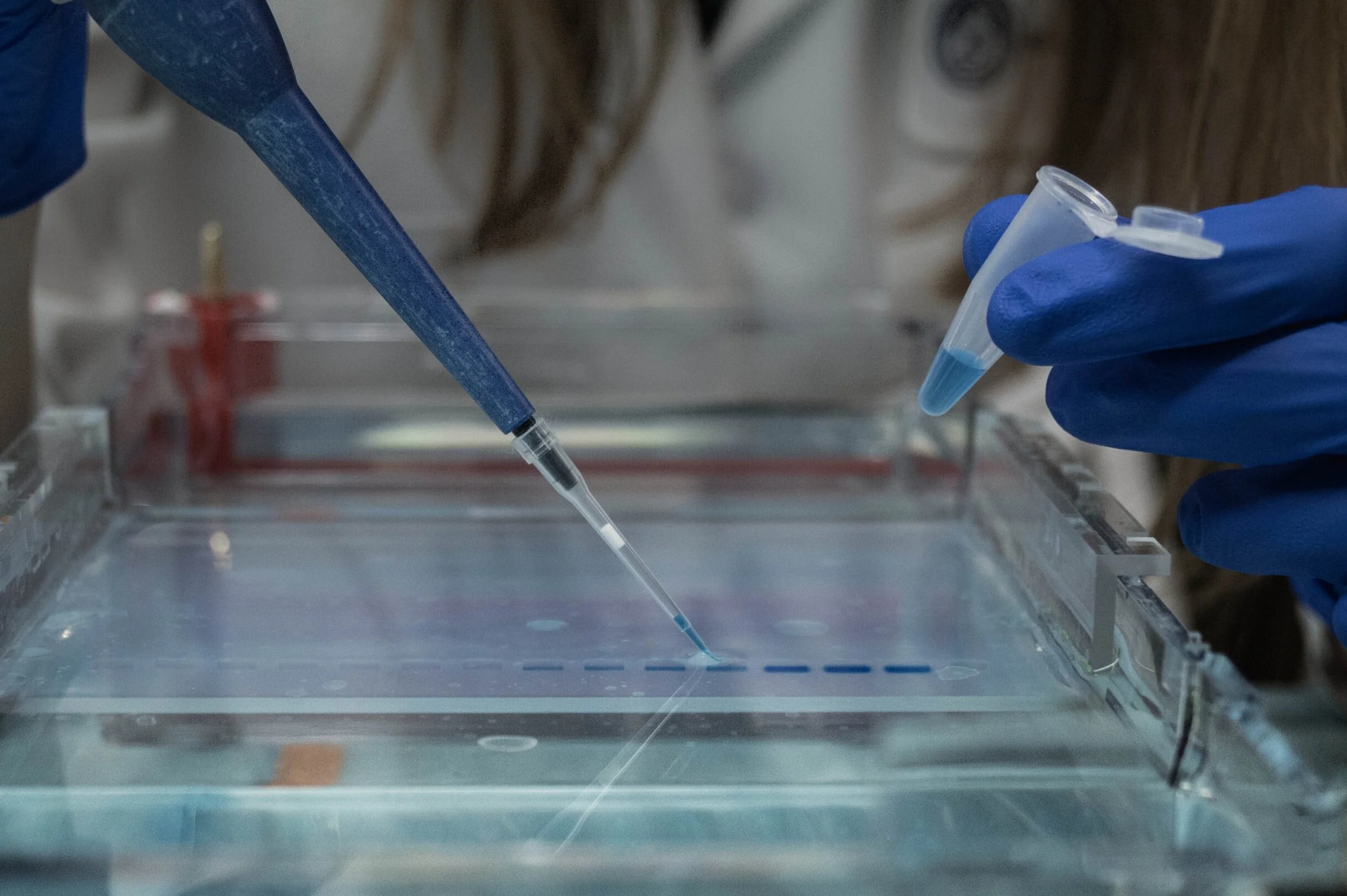DNA,RNA,& Splicing
Inside each of our cells is a molecular instruction manual called DNA that tells our bodies how to grow, develop, and function. DNA is also what makes us unique as individuals: we get half of our DNA from our biological mother and half of our DNA from our biological father, which all comes together to make us. Occasionally, new DNA changes can happen for the first time in an individual and are therefore not inherited from their parents.
DNA is made of thousands of genes that each provide a specific instruction to the body. Genes determine traits like our hair color, skin color, and height, and provide instructions to keep our body healthy. We have two copies of every gene, and genes are composed of an alphabet of four letters called nucleotides: A, T, C, and G.
Genes are made up of two parts: exons and introns.
Exons are the message used by the cell.
Introns help the cell communicate that message.
The cell transcribes the exons into messenger RNA (mRNA), a ‘working copy’ of the gene’s instructions. At this point, the introns have done their job and are removed or ‘spliced’ out. With just exons now – no introns remaining – the cell connects the exons to form the correct message. This message is used to make proteins, enzymes, hormones, and other materials in our body. Therefore, the correct splicing of introns and exons in the gene is very important for how our bodies function.
Health problems can occur if there is a spelling error in the DNA message: this is called a ‘mutation’ or a ‘variant’ in the gene. Sometimes, both copies of a gene must have a mutation in order to cause disease. These diseases are said to have a “recessive” inheritance pattern, and are attributed to the complete lack of a specific protein, enzyme, or other cellular material. Other diseases are caused by a mutation in only one copy of the gene. These diseases are said to have a “dominant” inheritance pattern, and can be caused by lack of enough protein, creation of harmful protein, or a disruption of a typical cellular pathway.
Mutations can happen in a variety of ways, but occasionally (less than 10% of the time), a mutation causes a problem with the splicing of the gene. When there is a problem with splicing, the mRNA can’t relay the complete or correct instructions.
ASO Therapies
Sometimes, aberrant splicing can be fixed using a synthetic molecule called an antisense oligonucleotide, also called an ‘oligo’ or an ASO. Antisense means it is complementary to the mRNA strand, and therefore can bind to it. Oligo means ‘small,’ because ASOs are made up of relatively few (usually fewer than 25) nucleotides. An ASO is a small string of DNA or RNA letters that can stick to the mRNA. While they act on genetic diseases, ASOs are not considered ‘gene therapy’ as they only make contact with RNA, not DNA.
There are two types of ASOs: splice-modulating and knockdown.
Splice-modulating ASOs work by connecting to the mRNA and helping the cell splice the exons correctly. These ASOs have been used as therapies for diseases like spinal muscular atrophy (SMA) and Duchenne muscular dystrophy (DMD). Splice-modulating ASOs work best for recessive diseases, in which both copies of the gene are broken and the body is unable to make any functional protein. They help the body make some of the missing protein by fixing the splicing. These ASOs can usually only stop a disease from getting worse, but cannot often undo damage that has already been done.
Knockdown ASOs work by connecting to the mRNA and silencing the message by activating an enzyme that degrades the RNA. They have been proposed as therapies for diseases like epilepsy or Huntington disease. Knockdown ASOs work best for dominant diseases, in which a gene makes too much of a protein or makes a toxic protein. These ASOs help decrease the amount of protein to a level the body can manage.
How Mila’s ASO works
Mila’s story
Mila was diagnosed with Batten disease, a childhood-onset, neurodegenerative, fatal diagnosis. Batten disease causes blindness and neurological decline, as the nervous system is unable to clear cellular waste. Batten disease is progressive (gets worse over time) as the cells increasingly become overloaded. Her form of Batten disease, caused by a gene named MFSD8, is extraordinarily rare. Therefore, there were no available or even experimental therapies at the time of her diagnosis. As the family pushed forward to advocate for a treatment for Mila, they sought whole genome sequencing to clarify her molecular diagnosis. Genome sequencing through the Yu Lab revealed Mila inherited a rare, unique mutation that disrupts the splicing of MFSD8.
Because Mila’s mutation impaired the splicing process, our lab posited that an ASO therapy could work to lessen her disease progression. However, because Mila’s Batten disease was advancing rapidly, treatment development needed to happen very quickly. Learning from the successes of other ASO therapies, and through strategic coordination and collaboration, an ASO for Mila was developed in less than a year. As ASOs are typically named with the suffix ‘-sen’ (such as nusinersen or fomivirsen), this treatment was named milasen after its recipient.
Since its development, Mila has had intrathecal (spinal) injections of milasen on a regimented schedule. It is unlikely that the ASO will undo any of the damage that was done in Mila’s seven years before treatment. However, as she now has fewer and milder seizures, it seems that milasen is doing its job in attenuating her Batten disease and preserving her current quality of life. See a timeline of milasen development here.




